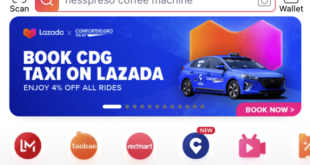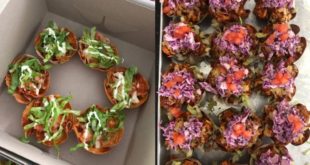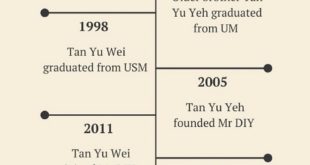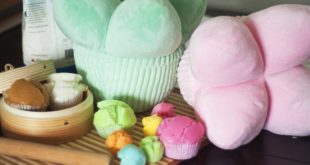MaGIC’s E-Nation 2021 kicked off yesterday with a morning talk from Beth Davies, a former Director of Learning & Development at Tesla. Prior to that, she’s held management roles in Apple and Microsoft as well.
To set the scene, Beth reminded audiences that though big today, Apple and Tesla both started out as tiny startups. Apple had almost gone bankrupt in the 90s, and people doubted its survival when it first idealised the iPod.
When Tesla announced it would make electric cars, sceptics questioned how a startup could compete with bigger players like BMW, Ford, and Toyota. Not only that, but who would want an electric car? It was a stupid idea, Beth recalled people saying.
So, how did these companies overcome naysayers to come up with products that now have die-hard fans? All the way from Silicon Valley, Beth virtually spoke about how Malaysian entrepreneurs could grow their customer base with strategies modelled after the ones she experienced in both Apple and Tesla.
Have A Company Mission That Goes Beyond Your Product
There on the wall of Tesla’s factory in big block letters was the brand’s mission, “To accelerate the world’s transition to sustainable transportation.”
It’s a powerful mission, Beth said, because it wasn’t about Tesla, but about how everyone who worked in its team had a role to play to make an impact on the world. It was about accelerating the world’s transition from internal combustion engines to lowering emissions and becoming more sustainable.
“We knew we couldn’t do it ourselves, but we wanted to show what’s possible so others would join us. Our mission wasn’t about a single car or product, but how we could lead the way,” she emphasised. “So the first lesson is, capturing the minds of the team and galvanising others.”

Elon Musk would exemplify this goal in Tesla’s early days by publishing blog posts explaining their innovations and how they were being made to garner media and the public’s attention. The first 2 sentences in every article would reinforce the company’s mission, making it clear what they were doing and why they were doing it.
Come 2012, 4 years after the launch of their first electric car, Roadster, Elon noticed other companies weren’t transitioning to build any kind of electric vehicle (EV) themselves. Wondering if it was their lack of understanding of the technology, he opened up Tesla’s patents so that other players could get on board and create their own.
Elon’s actions inspired his own employees, but his energy also bled outside of the company and attracted customers who were excited and intrigued by Tesla’s work. They then showed support for Tesla’s efforts by putting themselves on waiting lists for the launch of the Model S.
Build A Product Customers Can’t Find Anywhere Else
At Apple and Tesla, no matter an employee’s role or level, everyone was expected to be an innovator, find better ways to do their business and question everything with a “Why?” or “What if?”
Simplicity was another core value at Apple. Simple was elegant, desirable by customers, and easy to use and learn. To create the first iPhone, its designers and engineers brainstormed a list of features and cut them down to the top 5, which they would double down on making exceptionally. This led to initial customers posting up videos of their 2-year olds learning how to use the phones. The product was marketing itself.
As for Tesla, by rethinking the way a car’s chassis could be made differently, they moved the car’s battery from the front hood to the bottom, under the car, like a skateboard. Doing so made the car safer, as it had a crumple zone in the front in case of impact, while the battery at the bottom lowered its centre of gravity, reducing the rollover risk.

These changes enabled Tesla to get a 5-star safety rating (the maximum a car can score) in every subcategory of the National Highway Traffic Safety Administration (NHTSA) crash tests. They also made it a family-friendly car, because without an engine in the front, customers would have more storage space to load items in the front and seat 2 kids in the boot.
And this mantra of making things better by design spilled over to how the cars were sold as well.
Surprise And Delight Your Customers
Instead of selling Tesla’s cars in regular dealerships, they brought their dealerships to malls where customers could walk in, learn about and try the technology firsthand.
The same applies to Apple, where customers have the chance to touch and try the phones being displayed in the stores, even if they weren’t buying it.
Thus, for businesses, the most important part is the customer. In order to have a product that’ll change the world, businesses need customers to adopt a product in the first place. Apple does this by employing the philosophy of surprising and delighting its customers.
For example, if a customer purchases a heavy product, its Geniuses (what the brand calls employees) would offer to help carry the items to their car. Or, if customers came in with a problem for their device but had an expired warranty, Geniuses would still act as if their warranty was still valid and help fix their phone.
Such actions delighted and surprised customers, convincing them that the brand was trustworthy, and became lifelong customers, even sharing them with their kins. “It’s not about a transaction, it’s about creating a customer for life who’d want to change the world with you,” Beth shared.
- If you’ve missed out on attending E-Nation this year, you can still access this session and others after registering here.
- You can read more on what we’ve written about MaGIC here.
Featured Image Credit: Beth Davies Speaking Keynote At The World HR Forum, Aurum Speakers Bureau



